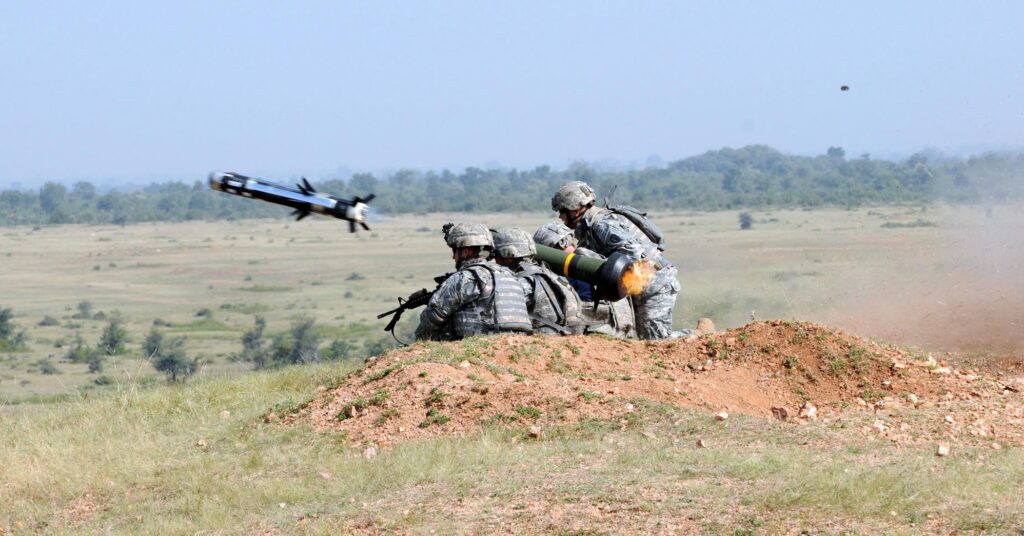Grim World May Help Ease Grim Army Budget
Posted on

Army soldiers fire a Javelin anti-tank missile.
WASHINGTON: Alice in Wonderland‘s White Queen could believe in “six impossible things before breakfast.” The Army may not be that nimble but its leaked budget plan for 2017-2021 (first reported by Inside Defense) does make a whole string of assumptions:
- Budget Control Act cuts won’t happen, despite the lack of encouraging signs of a sequestration deal.
- Cuts to Guard helicopters and personnel benefits will happen and deliver savings, despite both initiatives being politically painful for Capital Hill.
- Overseas Contingency Operations funds will continue to carry $6 billion to $7 billion of “enduring activities” that the base budget can’t absorb.
(For the cherry on top, the plan mentions the Army could, like, really use a round of base closures, although it doesn’t count on that happening because it won’t).
Even under these optimistic assumptions, the Army budget will be outpaced by inflation, losing $2 billion in real dollars over the five years. As the document says, “the Army will have perpetual capacity shortfalls.”
Worse, those shortfalls are measured against the 2012 Defense Strategic Guidance, which made a lot of its own optimistic assumptions — peace in Iraq, for example, and peace in Europe — that “no longer hold true.” Demand for Army forces is up in the Pacific, Middle East, and Europe. But the Army won’t have enough troops trained and ready for high-intensity “decisive action” combat (say, with Russia) until at least 2022.
“What you are seeing in that document are assumptions and risks that the Army has been taking for several years now,” one Hill staffer told me. “It is just a more frank assessment of the situation than one normally sees in public.”
“While it is artfully worded, it is essentially an admission that the Army can’t do everything with fewer resources,” the staffer continued. “That may seem obvious, but the official story has continued to be that the Army can do combat training, tons of overseas deployments, fix bases, buy new equipment, etc. This document shows that is not the case and they know it.”
But don’t despair, urged one leading defense analyst: The Army’s fiscal plummet may yet turn around.
“I think that the Army is actually going to have a pretty strong case to be made,” said the Brookings Institution’s Michael O’Hanlon, “and I think most of the presidential field will be on the side of the Army.”
“You just look around the broader Middle East: It’s not becoming more stable,” O’Hanlon said at this week’s ComDef conference. “Deterring Putin is not becoming easier.” Both these theaters require significant ground forces, he argued.
In the downsizing so far, “the Army’s been taking the brunt, at least rhetorically and conceptually — the cuts haven’t been quite as dramatic as some of the rhetoric,” O’Hanlon said. “I think we’ve had enough of a push in one direction and I think we’re likely to see a push back.”
Subscribe to our newsletter
Promotions, new products and sales. Directly to your inbox.
